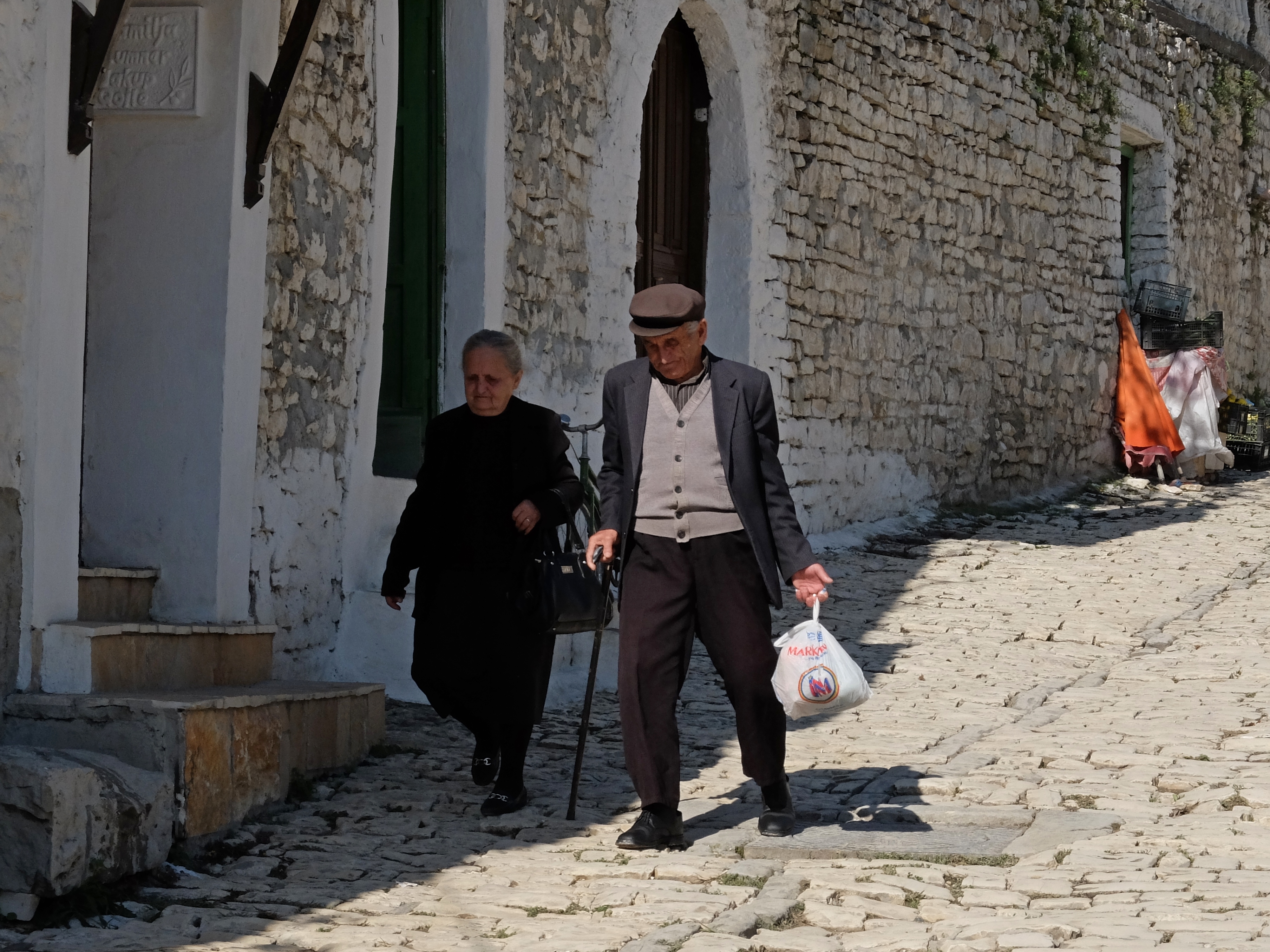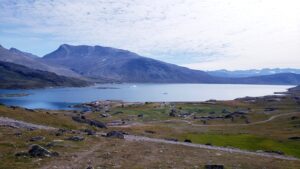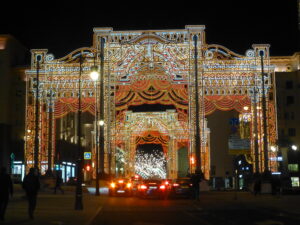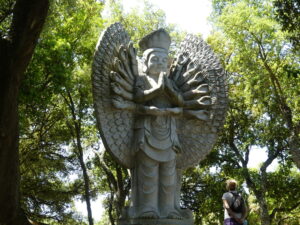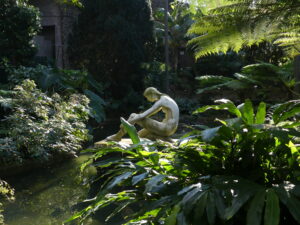
So many people we meet, interested in going to Albania, are both curious and somewhat fearful about it. They imagine a third world country or extreme deprivation or some such horror because of Albania’s 40 year dark ages until 1991. That is when Enver Hoxha imposed an iron-fisted dictatorial Communism.
In another post (click here to read it), we reflected on how historically Albania was poised between conflicting empires and religions, and described that Hoxha period. For our visit to the antiquities within Albania that embody these cross-currents, click here.)
We certainly saw the imprint of that history all over the country, but observed how well Albania was faring in the 25 years since democracy arrived and it began to integrate with its European cousins. Visitors need have no concerns about visiting here, because there are plenty of services available, though in many ways Albania is still working at being tourist ready.
We found that Albania offers extraordinary natural beauty, honored historical monuments, a mix of sleek roads and somewhat passable ones, cities with a lot of traffic but plenty of charms, modern hotels and upgraded apartment complexes – plus a strong connection with its old ways and culture.
Natural beauty and man’s imprint
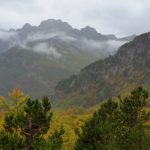
From the Julian Alps to the north, limestone mountains rising out of picturesque valleys and forests, to the inviting beaches south, Albania offers a wondrous landscape to explore or play in.
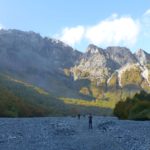
We did the most famous alpine circuit to the northeast of Shkoder, the old intellectual capital of the country. The three pieces of that circuit include, first, a ferry across spectacular Lake Koman. Then, a trek climbing 800 meters in height to a mountain pass overlooking the Valbona valley northeast of Shkoder, followed by a descent of 1000 meters to the small village of Theth. Finally, a fist-clenching, 25kph jeep ride steeply up another 1000 meters or so for three hours over rutted, slippery dirt roads. At every point, you could see development encroaching.
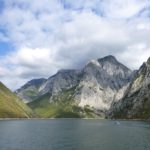
We started with a furgon (scheduled mini-van) up from the tidal plain through various sets of hills, lovely in themselves, though strung with power lines and on back roads with plenty of potholes – an oddity considering that this is a major tourist attraction we were heading toward. The furgon brings you to the ferry which crosses Lake Koman. This lake was created in part by damming, yet it’s a beautiful 2.5 hour ride, more like a fjord surrounded by tall forested mountains and granite peaks.
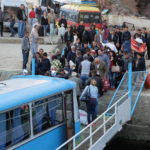
The ferry stop itself is frenetic, with numerous furgons and taxis jammed in a small lot, plus hundreds of people bustling around. Many resorted to the smoke-filled bar hanging over the lot, for coffee or doses of local raki. The non-stop tourist boat to Fierze is easy to find, and quite comfortable. By contrast, we saw the local ferry dropping and collecting a throng of people with all sorts of goods, foodstuffs, luggage and what-not. As a boatload emptied, villagers greeted each other noisily. This is the easiest way the villagers in the hills above Koman can reach sources of supplies or markets.
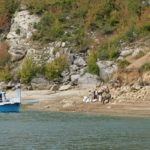
At ferry stops along the lakeshore, we saw donkeys loaded with items hauled down from the steeply pitched hills and people waiting patiently as if the ferry were a city bus. At Fierze, the end of the ferry ride, private cars, furgons and taxis, awaited travelers and carried them off to Valbona or other high mountain villages.
Near the shore long the lake, we also saw digging operations with earth-movers on the mountainside, preparation for harnessing more hydro-power. One front-end loader seemed engaged in the Sisyphean task of moving mud from one location in the water to another.

For now, up in Valbona, there has been little impact on the pristine wilderness and natural beauty. For now, at least, the rich pine forest, the grand limestone peaks, the unspoiled valley and the thick groves of beech and leafy trees on the descent to Theth make the day’s hike an extraordinary experience – even when the weather turns foul. But new hydro-projects are ongoing just out of sight at Valbona. In the quiet of the place, you could just hear the growl of more construction equipment prepping roads and sites for the projects.
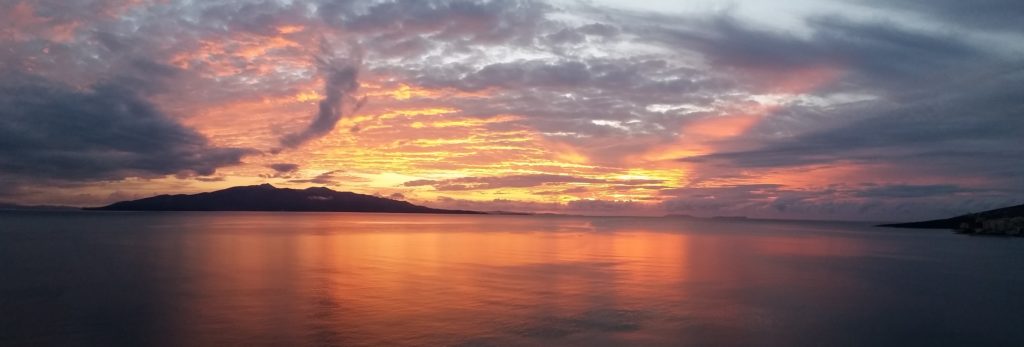

The beaches and rocky coasts of the south, the so-called Albanian Riviera, are still inviting to visitors. The towns, like the largest one Sarande near the Greek border, are set on hillsides easing into the shoreline of their bays – a bit like the Amalfi coast, though not quite as steep.

Within eyeshot of Corfu, the coast is inevitably a bit more sybaritic and pleasure-oriented than the north, with a different dialect as well. The area offers plenty of services and types of accommodations, with none of the international chains so far. But unrestrained development in the last few decades has cluttered the hills with high-rise after high-rise, stretching for a dozen kilometers along the shore. The exuberance of development has left many half-finished buildings and empty lots for the time being; completed buildings seem hardly full. Older ones look a bit worn.
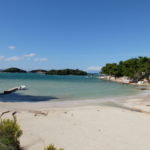
At some point, they will be worth completing and fixing up. In the meantime, put aside the aesthetics and you can have a wonderful experience here. One of the best examples of this is Lori Bay at Ksamil, just south of Sarande, a picture perfect sand horseshoe looking out on three small islands easily reached by swimming or boat. Arriving on a sunny day, we felt we had just landed in a tropical paradise.
Welcoming cities with a drab legacy
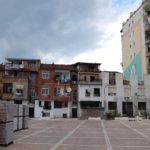
The main cities in the north can have a run-down, drab, third-world look about them – largely due to the Communist era under Hoxha. Grey, the locals sneer, was the primary color; buildings that have been renovated or newer ones can be quite colorful in reaction, or oddly shaped. From the tourist standpoint, there are plenty of good hotels on offer; even the Hoxha-era International hotel in Tirana has upgraded to accommodate the finicky.
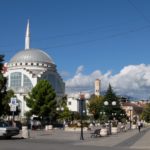
Shkoder, highly visited by people touring Montenegro, has a bounty of modern hotels in the center city, as well as several hostels appealing to backpackers and even veterans like us. There are also many nice apartments on offer from Airbnb and other sources, even where the building exteriors are still a bit uninviting. Ours in Tirana was very central, right near the legendary open market, in a family-oriented neighborhood with many little shops for produce, cheese and breads – alternating with cafes and local bars.
Malls have started to appear, in newer buildings or re-purposed old ones. But Albanians have not lost touch with small local vendors: in addition to such shops as we discovered, there are cart-type sellers all over the streets in the cities. It’s amazing how these minor touches create such a friendly feel in a town.
The advance of the big cities is to be expected. Tirana is the capital and the center of business and government. Shkoder, because of its old university, has long been the intellectual capital, and the gateway to the mountains.
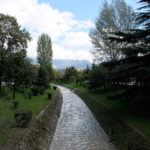
At the center of both is a hip district not completely given over to glitz yet, as they still have several gathering spots for the local old-timers in their midst. Blloko is approximately a 10 block square area within Tirana, adjacent to a lovely park that follows the main river through the city. This area, formerly restricted to government and party officials during the Communist regime over 20 years ago, has opened up to everyone with plentiful cafes and high-end restaurants. It looks like an inviting section of any European metropolis, so now it’s a haven for tourists, young Albanians and the middle-class of the city.
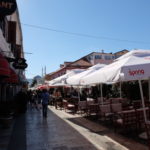
Shkoder’s hip district includes a pedestrian section with quite a bit more historical flavor. Gracious older buildings line the streets. It’s a rambunctious blend of high style, pizzeria, local food joints, Albanian specialty offerings, gambling pubs and traditional, local cafes.
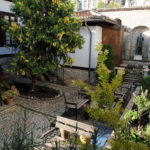
The smaller, historic towns farther south, like Gjiorkaster and Berat – whose centers look like 18th and 19th century Ottoman towns – offer similar tourist resources, often in vintage and historic buildings, though contemporary options are available. At Berat, we stayed in an engagingly renovated amalgam of 19th century Ottoman-era houses, pure pleasure.
Yet all is not running quite so smoothly yet. We experienced a few power outages. In our Tirana apartment, the water is pumped so the residents of the building know to stock large bottles of water just in case, for use in the toilet if nothing else. During one power outage, a kindly neighbor brought over a 5 liter bottle to aid the hapless visitors. Tourist information can be tough to find; the tourist offices are open long hours, but don’t seem to have much in the way of materials to give you, especially toward the end of the season. They’re always out of maps.
So many of the shops and services are cash only. Credit or debit cards haven’t even gained traction at petrol stops, let along fancy restaurants. Even places with credit card signs often can’t make the machines work. There are plenty of bank machines to withdraw cash, but most of them still reject MasterCard debit cards.
And the cities can be choked with traffic, particularly in the narrow streets of the central city. The number of cars has swollen while public transport has not kept up, even in the off-season and in resort towns. We like to walk, so staying on your feet in the towns is a very good idea. Most of the central cities are compact anyway, and there is plenty of parkland and green space to enjoy off-road. What with industrial activity as well, air quality can be bad, especially in Tirana, as a result.
The good roads you travel by – and beware of
Which brings us to driving in general…Many principal roads, like the highway south from Durres and Tirana, are smooth and new, as are some local roads – all at ridiculously low speed limits which are regularly ignored by Albanian drivers.
Drivers tend to be skittish or daredevils, racing about and passing at blind sections of a road. Older drivers never had a car before the Communist fall, so skills are more on-the-job than learned deliberately. It was good to see so many auto-shkol vehicles for new drivers. The veterans follow their own hidden code of driving rules. Few understand they should yield to cars on entering a roundabout, for example. Yet, in many ways, it’s no worse than, say, Italy and its drivers.
To impose some kind of control, all over the country, police are stationed at critical points with little stop signs on sticks to pull you over for ticketing or talking to. We got stopped once and dismissed, but local drivers tend to know where the police station themselves so they slow down near that point. Pro tip: follow a local driver, at least not a skittish one.
Even the daredevils slow down a bit on the rougher roads, for there are many main roads, city streets and local byways in need of an overhaul.
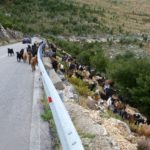
And just when you think you can safely ignore the speed limits, you find yourself in the midst of livestock. Goatherders patrol along the edge of mountain and country roads, only a long stick in hand, mainly to keep their herd from straying onto the road and being killed by madcap Albanian drivers. One time, as we rounded a tight bend on a road, a herd of goats suddenly began to cross in front of us. The herder, though out of sight on the hillside below, was driving them up hill past the road.
City traffic is a snarl at almost all times – a consequence of narrow streets, too many cars, all mingling with pedestrians, bicycles, farm equipment and repair work. Here too you need a combination of patience and boldness to deal with it.
And then there is rain. It can be a challenge to drive safely in heavy rain. Roads often cannot drain fast enough and leave deep pools not generally obvious. On our drive south, we passed a canal eyeing the road greedily and wanting to take possession. In the hillsides, gravel and falling rocks flowed onto the road surface because Albania hasn’t the funds to add channels and barriers. Once again it’s helpful to follow a car so that it can discover the problems first.
One other distinctive feature of the roads is the innumerable petrol stations, at a minimum a kilometer apart and often then in clusters of two or three. You will never run out of fuel in Albania, if you have the cash to pay for some. Newer stations have supplanted older, disused ones often, but the number seems to keep growing, not declining. Along with them, and perhaps even more plentiful, are the car washes – lavazh. Albanians seem to have an obsession with cleaning their cars, as well as filling their tanks.
People
Albania is at the early to middle stages of westernizing, growing and developing – with all the challenges that poses for visitors, but also with so much left of the charm of the older ways. From the northern mountains to the southern beaches to the intriguing and historical cities, what makes it especially worthwhile are the warm, welcoming people. They may have their own minds about how to welcome their guests, a blend of catering to your needs and forcing your re-adjustment to their ways, such as haphazard service. But – despite their tough lives under the Communist regime – they are ready to help and smilingly engage with you. Stop anywhere and you’re likely to find a welcoming conversation, or offer of assistance, like those who helped us order at restaurants, pointed out highlights or gave directions, or just wanted to exchange thoughts about our countries. When you say goodby, “mire pafshim,” you add a courteous handshake, especially if you’re grateful for some help.
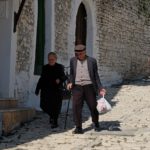
As in the old days, in the villages, young and old still walk the roads, or the streets of town, for kilometers no matter what their physical condition. Though religion was banned for so many years under the Communists, by tradition and religious background (Roman Catholic, Eastern Orthodox and Muslim), they are conservative in matters of dress and moral outlook. The older men typically appear outdoors in suit jackets, or perhaps sweaters or windbreakers rather than shirtsleeves. Even the goatherders seem dressed up. The older women, especially in the villages, wear black tops and black skirts, with perhaps a black cap. There is plenty of alcohol for sale in stores and bars, but it’s largely an Ottoman-style café culture, with coffee breaks throughout the day. Even the large cities seem just an extended community. Cars stop in the middle of the street to say hello. Passers-by regularly greet each other and stop for conversation.
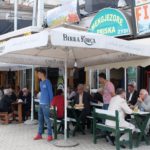
About this, Elif Shafak wrote: “In the Ottoman times, there were itinerant storytellers called “meddah”. They would go to coffee houses, where they would tell a story in front of an audience, often improvising. With each new person in the story, the meddah would change his voice, impersonating that character. Everybody could go and listen, you know ordinary people, even the sultan, Muslims and non-Muslims. Stories cut across all boundaries.”
Now talk of politics or family or conditions comprise the stories people tell, but the importance of social and communal gathering has not waned, even with strangers like us from another land.
(Also, for more pictures from Albania, CLICK HERE to view the slideshow at the end of the itinerary page.)


